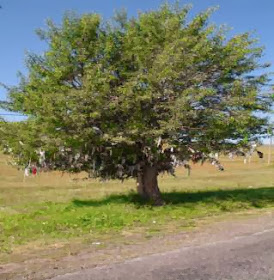 Simin Uysal
Simin UysalI love trees and often see them in my dreams. Sometimes they come into my dreams as a singing oak tree, a beech which I climb up to the moon, a pine tree or a fruit tree offering me delicious fruits from its branches. I do not know the number of trees I planted after seeing them in a dream. They are a lot. I can sit with a tree for hours without getting bored, just listening to the sound of the wind dancing between its leaves or simply relaxing under its shade during hot summers.
Traveling in Anatolia, one can be surprised by the sudden appearance of a tree with pieces of fabric hanging from it. They are wishing trees where people typically tie pieces of fabric from personal items like scarves, hankerchiefs or ribbons. Prayers are said silently while tying the fabrics. You can sometimes see a person distributing offerings to others under the tree after their wish coming true. People make pilgrimages to them, walk around them and make vows to them. These trees are not cut down and protected by everyone.
The wishing trees typically stand alone, either on a hilltop, in the middle of a vast plane, next to the tomb of a dervish or a water spring. The ones I have seen were beech, oak, mulberry, juniper, myrtle, cedar, plane and pine trees.
There are so many stories, beliefs and myths about trees in Anatolia and in the Turkic nations of Central Aisa and Siberia and almost all of them can be summarized in categories as the Tree of Life and Cosmic Axis.
In many ancient Turkic myths (like the Oghuz Khagan) we can see that trees have a role in the births of great men, being their father or mother. Even today, the Yakut turks believe that the first man was nursed by a woman who appeared in the cosmic tree.
 |
| The Life Tree in Turkish Creamic Art |
In Anatolia, people sleep under an old tree and expect "old wise man" to appear them in a dream. So, trees also serve as holy gates for dreams.
Women wanting to have children roll over the ground under a lone apple tree. I was so surprised when I learned this because in my dreams apples and apple trees usually represent fertility.
It is believed that who plants a tree will have a long life and if someone chops down a tree with greed, the tree of his family will dry up meaning he will have no more descendants.
The tree of life is a traditional motif in Anatolian handwowen carpets, kilims and ceramic art.
When visiting cemeteries, one can see trees planted at the headside (and sometimes also the foot) of the graves so the dead can become a part of the life cycle of the tree and their souls be carried to sky.
Trees are important part of traditional celebrations, too. During Hidirellez celebrations on May 5-6, when Khidir and Elijas meet, wishes are written or drawn on pieces of paper and hung gently on the branches or left under rose trees.
Decorating trees and leaving offerings under them is an ancient tradition still practiced today. The Turkic people of Central Asia still say "at the navel of the earth and at the center of all things, the largest of all earthly trees grows, a gigantic pine whose top branches touch the home of Bay Ülgen (the great God)" The celebration of "the birth of the sun" during the winter solstice has been an important event. The night and the day fight with each other and the day wins on the 22nd December. On this day, the sacred pine tree is decorated with wishes, the larger families come together, songs are sang and offerings to the great God are placed under the tree and everyone eats together. The celebration exists under names of Nartavan, Raştua and Nardogan in different Turkic nations, all of them meaning "the birth of the sun".
Sounds like a Christmas tree, doesn't it? This is not celebrated in Anatolia and nor does the Christmas but the wishing trees are everywhere as gates allowing dreams to reach us, carrying our wishes, prayers and souls to the skies. So, I will be decorating the old pine tree in my front garden tomorrow with ribbons of best wishes for the trees, my family, friends and all of life.



